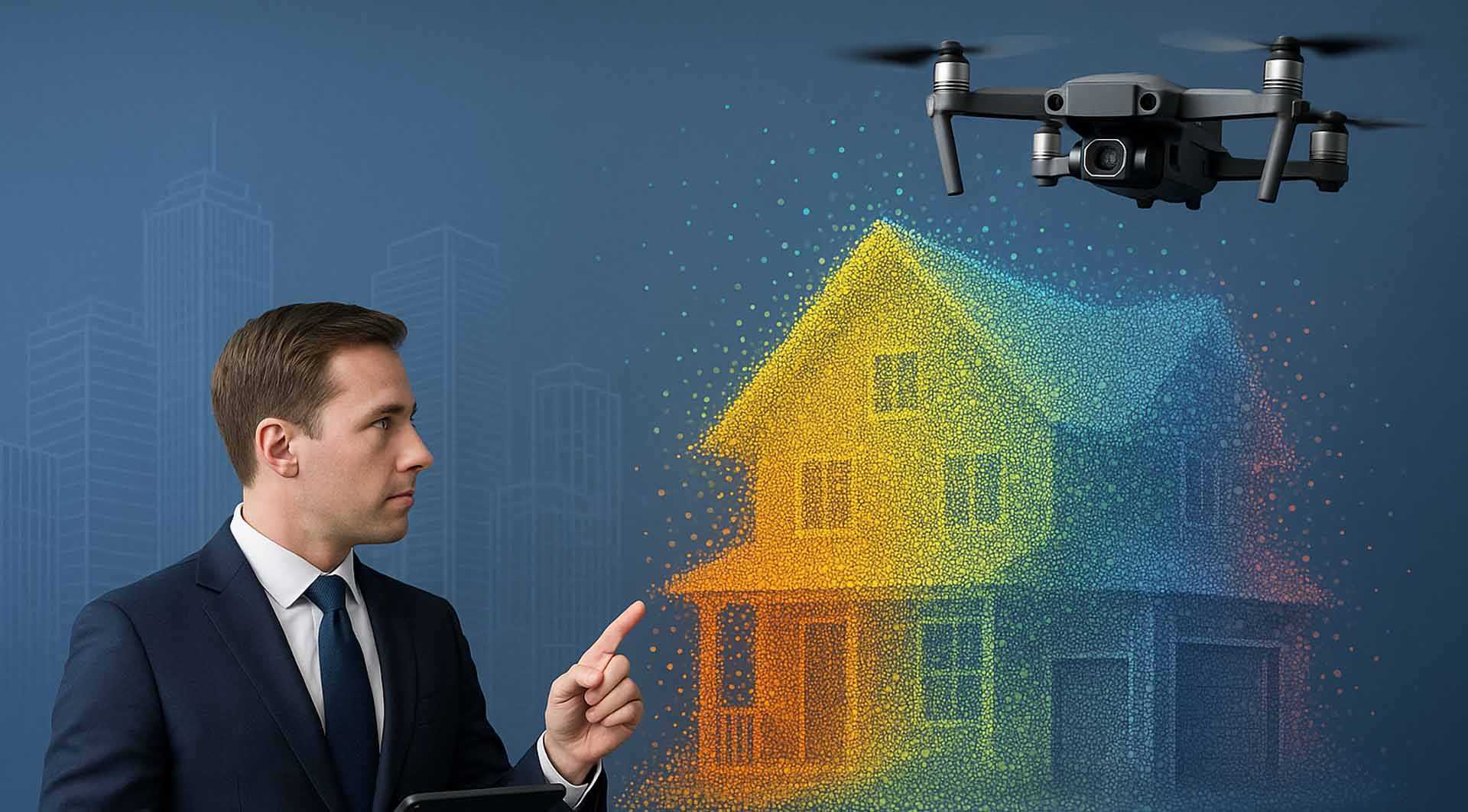
How Gaussian Splatting and NeRFs are Shifting the Landscape in Real Estate and Hospitality
By Michael Rubloff and Nitin Bhargava
In a market where showing, not just telling, is everything, the real estate industry is undergoing a quiet revolution. Leading this charge is lifelike 3D reconstruction through radiance field representations. Listings, maps, and property data are becoming more informative and deeply immersive. Across consumer platforms, professional tools, and mapping experiences, we’re seeing the real world rollout of these technologies at scale. Here’s how three recent case studies, Zillow’s SkyTour, Google Maps’ Immersive View, and DJI Terra, highlight this shift.
Zillow SkyTour: Immersive 3D Tours for Homebuyers
Announced just last week, Zillow’s SkyTour marks one of the first commercial integrations of Gaussian Splatting into a mainstream real estate platform. By converting simple drone footage into interactive 3D exterior tours, Zillow allows prospective buyers to virtually fly around a property, offering spatial context that flat photos and floor plans just can’t capture. Additionally, traditional photogrammetry would fail to showcase the lifelike 3D preview of homes. Launched on select Showcase listings, these lifelike 3D previews are available right now and help set better buyer expectations from online home shopping. One potential unintended effect is how it's also enabling buyers to get a sense of the surrounding neighborhood too. For the time being, the radiance fields are only available for exteriors, but as they begin to make their way into homes, they will enable virtual listings and tours like never before. We will see asynchronous guided tours from listing agents in virtual reality, with product and appliance information embedded throughout the homes.
Radiance Field representations showcase how the residential real estate industry will be able to translate their inventory to potential buyers with significantly more capabilities, all without needing to update capture hardware.
Radiance Fields: Zillow adds Gaussian Splatting support with SkyTourZillow SkyTour Demo
Google Maps Immersive View: Exploring Retail in Lifelike 3D
While not built specifically for real estate, Google Maps’ Immersive View uses radiance field based technologies to provide previews of restaurants, bars, and coffee shops to users. Initially rolled out to over 150 different cities, interior Immersive View is one of the largest deployments of radiance fields on the internet. New features that have begun popping up in the Immersive View viewer include spatially placed images and greater control over the explorable area. It is likely these capabilities will continue to be expanded and leverage the burgeoning power of generative radiance fields to better inform customers of potential locations.
Radiance Fields: Google Maps Immersive View appears on desktopDJI Terra v5: 3D Surveying for Real Estate Developers & Planners
On the enterprise side, DJI Terra v5 brings Gaussian splatting to the tools used by land developers, surveyors, and real estate professionals. Aerial image data can now be processed into high-fidelity, interactive 3D models up to 2× faster than traditional methods, making it practical for site planning, marketing, and investor presentations.
This closes the loop. What used to require days of manual photogrammetry or expensive lidar can now be generated with consumer drones and a GPU. Additionally, DJI’s implementation can handle up to 30,000 images per capture, bringing true large scale radiance field reconstruction to its users. With just this as the starting point, the technology is poised to begin making a large scale impact on users and is ready to scale. Look for large properties to begin building out lifelike reconstruction on the internet.
Radiance Fields: DJI Terra adds support for Gaussian SplattingA New Standard for Real Estate Media
Together, these three use cases signal a broader shift in the industry:
Traditional Real Estate is shifting into its next implementation, bringing spatial awareness and lifelike fidelity to its customers. This is primarily being accomplished through gaussian splatting, but as 3DGS and other radiance field representations continue to release, this trend will only be cemented and accelerate. Additionally, increased customer expectations, due to the high fidelity, fast rendering rates, and increased access to information transform static images and 2D floorplans into fully navigable 3D environments. Radiance Fields are posed to scale, transforming slow progress of 3D modeling, updating pipelines with easy data capture and 3D reconstruction. What used to take tens of hours per scene is being replaced with just a drone and footage from a phone. However, radiance fields such as gaussian splatting are also impacting turnaround times for professionals working on the professional side. Instead of taking weeks to accurately review surveys and on-site inspections, gaussian splatting is radically dropping reconstruction times, while also allowing for asynchronous and continual reviewals of the location.
The amount of use cases that radiance fields are primed to supercharge within the real estate and hospitality industries are rapidly becoming reality and will soon be the general expectation of consumers and working professionals.